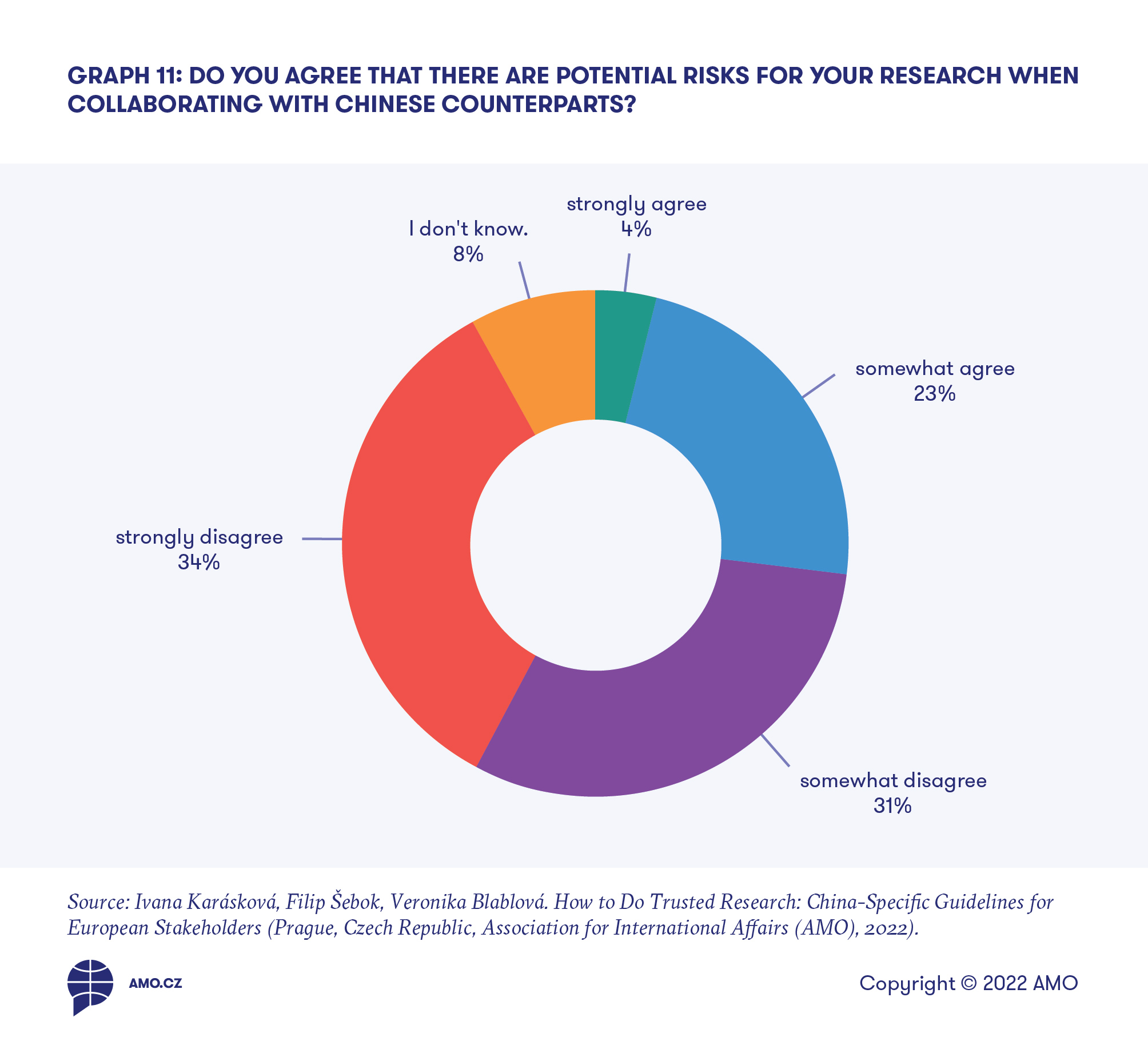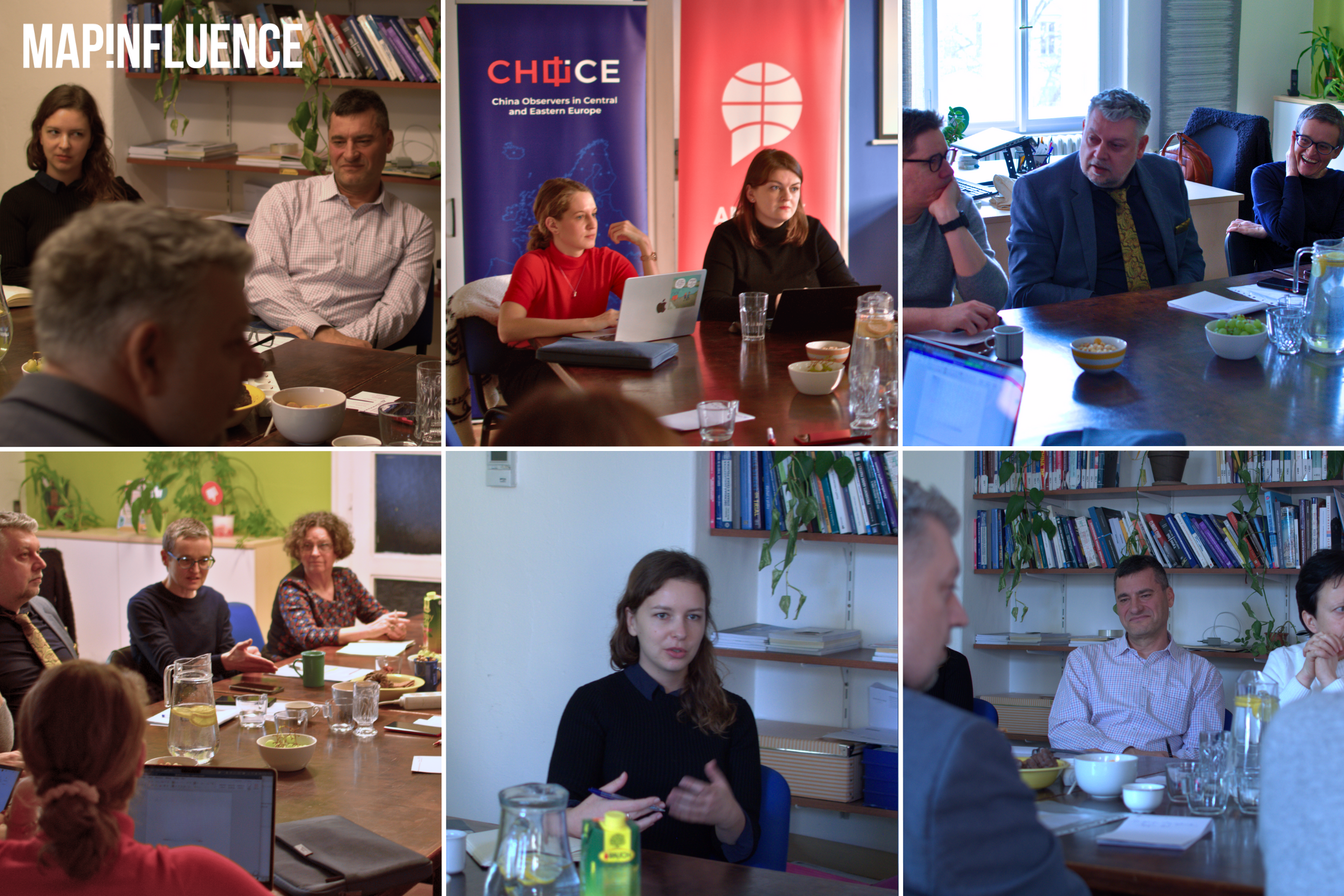State of Research Cooperation with China
The MapInfluenCE project has long addressed various aspects of academic cooperation between China and Central Europe. In the latest study, MapInfluenCE analysts focused on research funding from Chinese sources in Central Europe, specifically in the Czech Republic, Austria and Slovakia. Authors of this study used open-source data from the Web of Science (WoS) database to gain a broad picture of the current nature of collaboration between Central European scientists and China in specific research areas.
Specifically, they focused on funding of research outputs provided by various Chinese funding agencies, identifying individual researchers who have participated in research projects (co-)funded by China and have been affiliated to academic or research institutions based in the Czech Republic, Austria or Slovakia.
In order to learn more about the level of awareness and motivation of researchers to engage with China, the authors reached out via an online questionnaire to Czech, Slovak and Austrian researchers that were identified in the previous phase of the research. The following visualizations show the results of the detailed analysis.
Besides gathering data from WoS, to provide more rigorous evidence on the current state of academic cooperation between Central Europe and China, this research also focused on the number of students from China studying in the three Central European states.
As evident in Graph 1, the number of PhD students from China has been the highest and rather constant in Austria, whereas in Slovakia, the numbers remained low. On the other hand, the data for the Czech Republic deserve more detailed attention as the number of PhD students has risen considerably in the examined period.
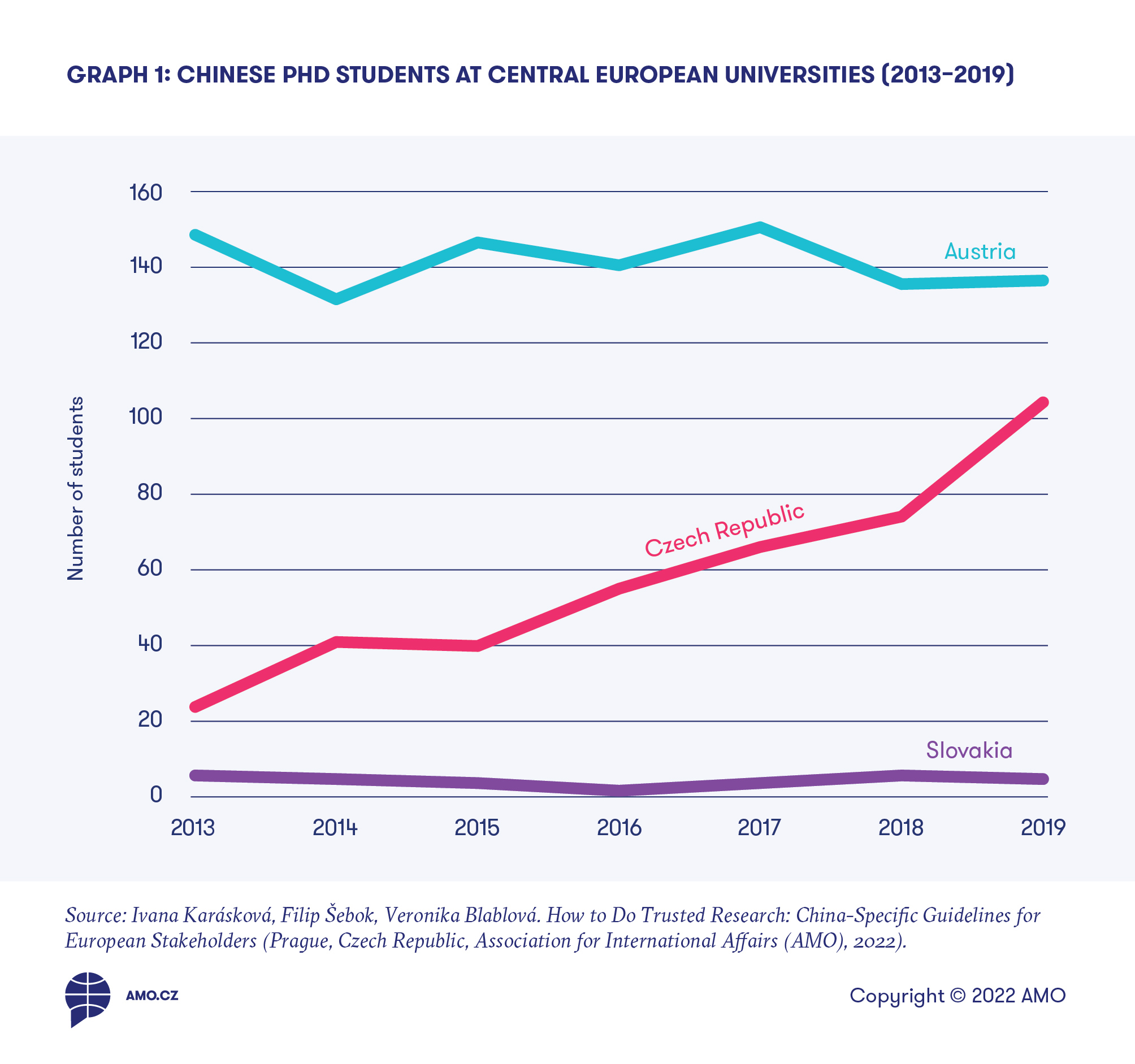
As evident from Graph 2, the number of incoming Chinese PhD students to the Czech Republic has been continuously increasing during the examined period. Approximately half of the Chinese PhD candidates studying in the Czech Republic have focused on natural sciences, technical areas and agriculture. Consequently, they may be involved in projects that would fit into the Chinese list of priority areas. Despite not being classified as sensitive by export controls or other legislative measures, the priority areas defined by China may also include the country’s (so far non-designated) “crown jewels” areas.
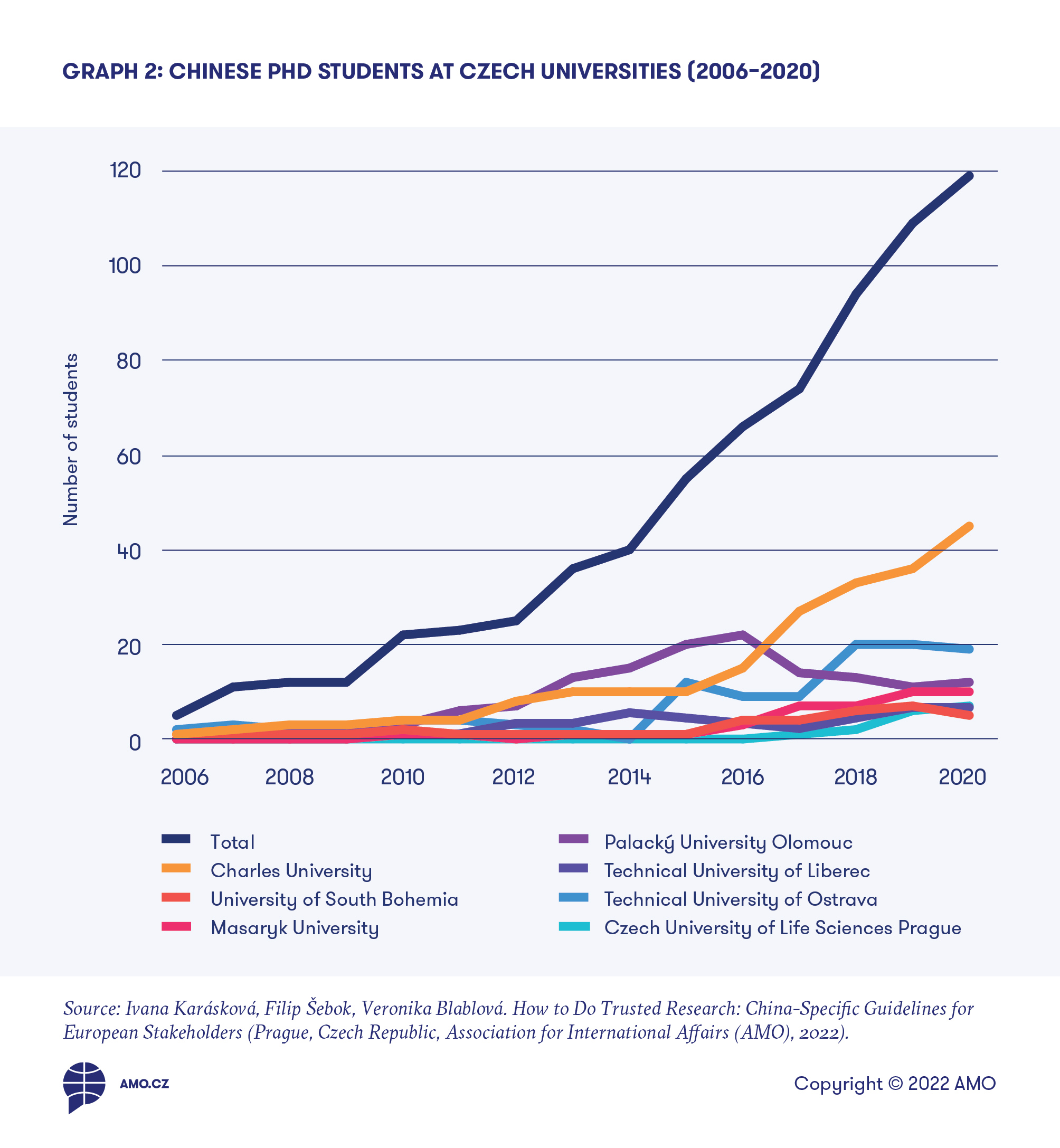
To get a detailed picture of the current nature of cooperation between Central European scientists and China in specific areas of research, the analysts used data from open sources, specifically from the Web of Science (WoS) database.
The analysis of the large dataset on Austrian research projects identified 685 research outputs declaring exclusive funding from Chinese sources and over 200 outputs funded on a bilateral basis. Therefore, the proportion of these funding categories amounted to half of the total examined research outputs as evident from the Graph 3.
It was possible to identify 203 research outputs in the research areas defined as priority in Chinese documents that declared funding solely from Chinese sources and to which authors with Czech institutional affiliations contributed. In the case of Slovakia, there was a low number of cases of research cooperation found through the WoS database, in comparison to the Czech Republic and Austria – 41 projects where research outputs declared funding solely from Chinese sources and 54 that were funded on a bilateral basis. Therefore, because of the low numbers, it is important to consider the results carefully and view them rather as a trend.
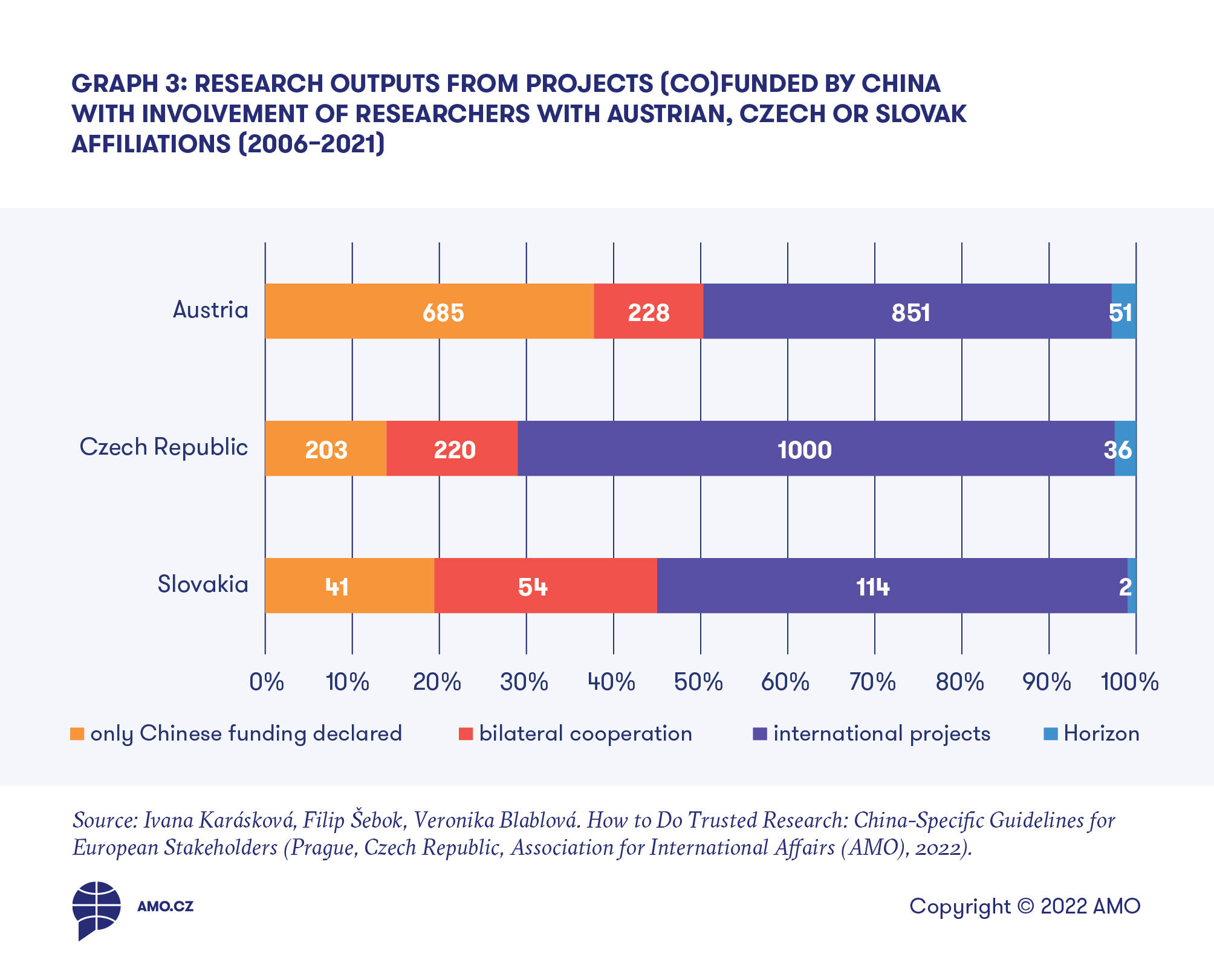
The first joint research outputs in the selected research areas identified by the WoS database appeared in 2006 in the case of the Czech Republic, and in 2007 in the case of Austria. As evident in the graph, the research cooperation has been constantly increasing, especially in recent years. The first research outputs declaring funding from China with involvement of Slovak researchers were identified in 2010, later than in the case of the Czech Republic and Austria. Given the tendency of development in these countries, with a few research outputs at the onset of research cooperation with China, followed by a steeper curve in more recent years, it may be hypothesised that cooperation with Slovakia may intensify in the coming years once Chinese scientists, universities and institutions become more established partners for research cooperation.
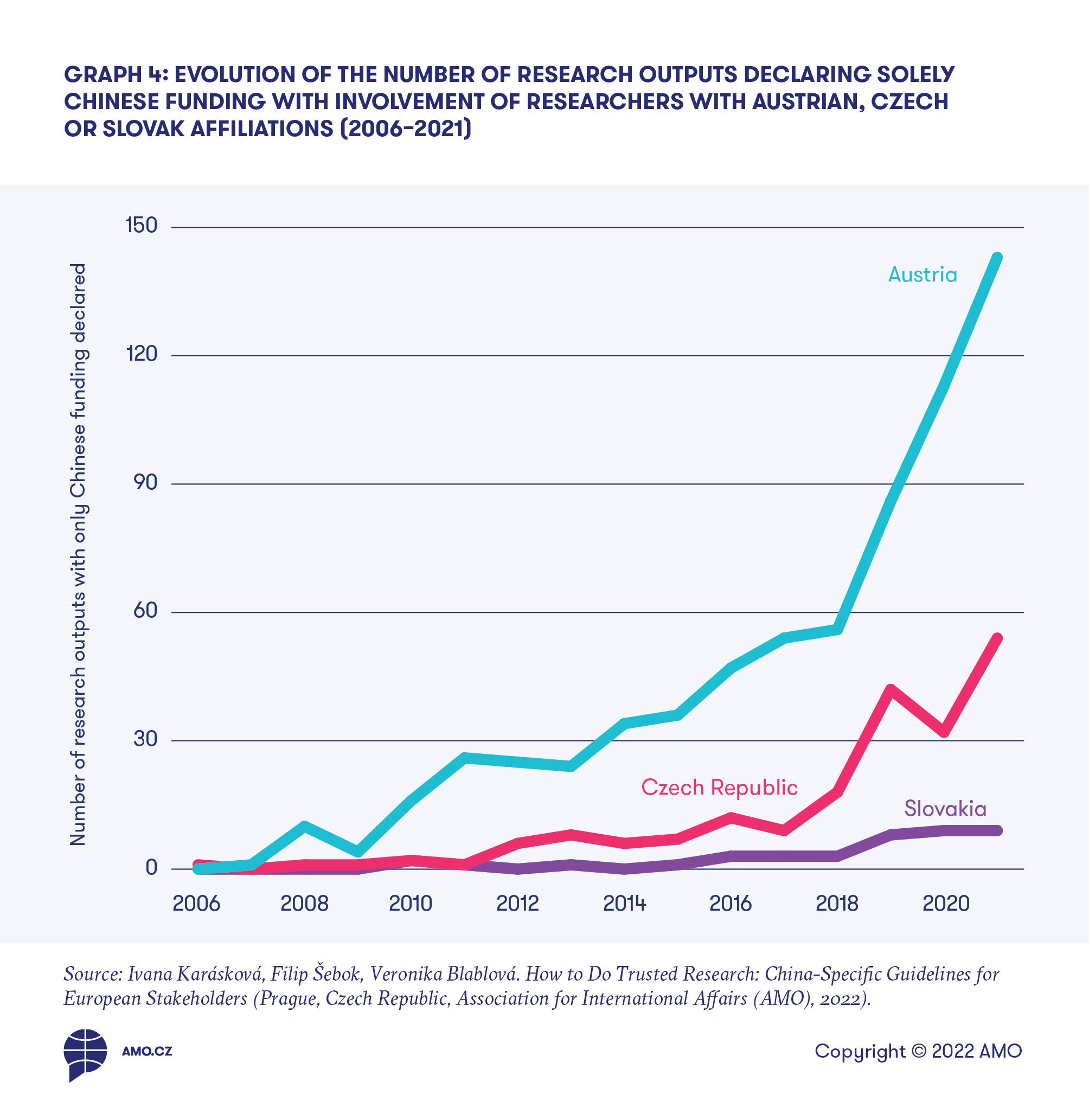
Most research cooperation has been found in the areas of development of new materials, agriculture and smart manufacturing and robotics. In Austria and the Czech Republic, research outputs have been identified in all priority areas as defined by China’s technology list. In Slovakia, we have identified joint research outputs in all but three priority areas.
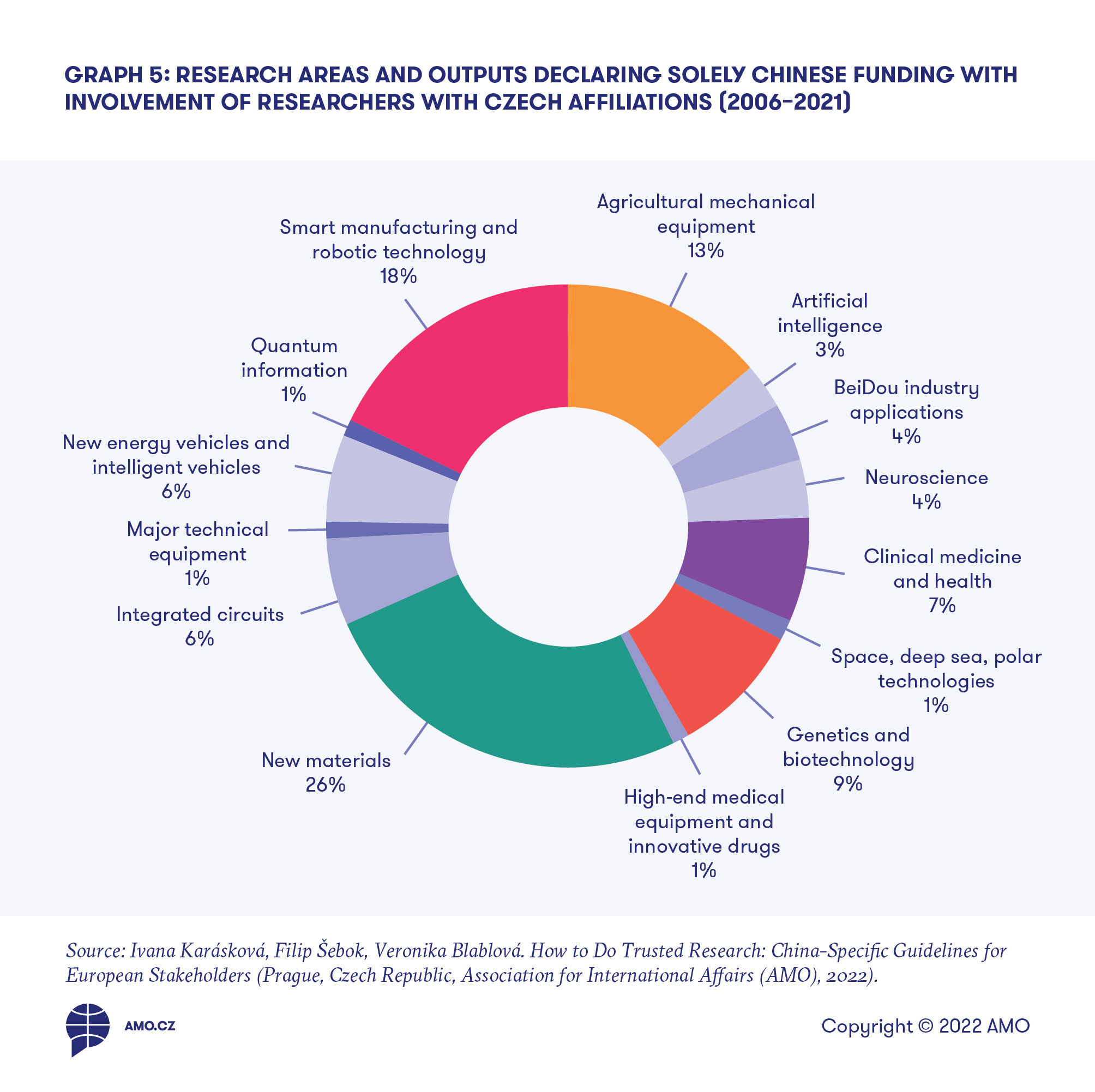
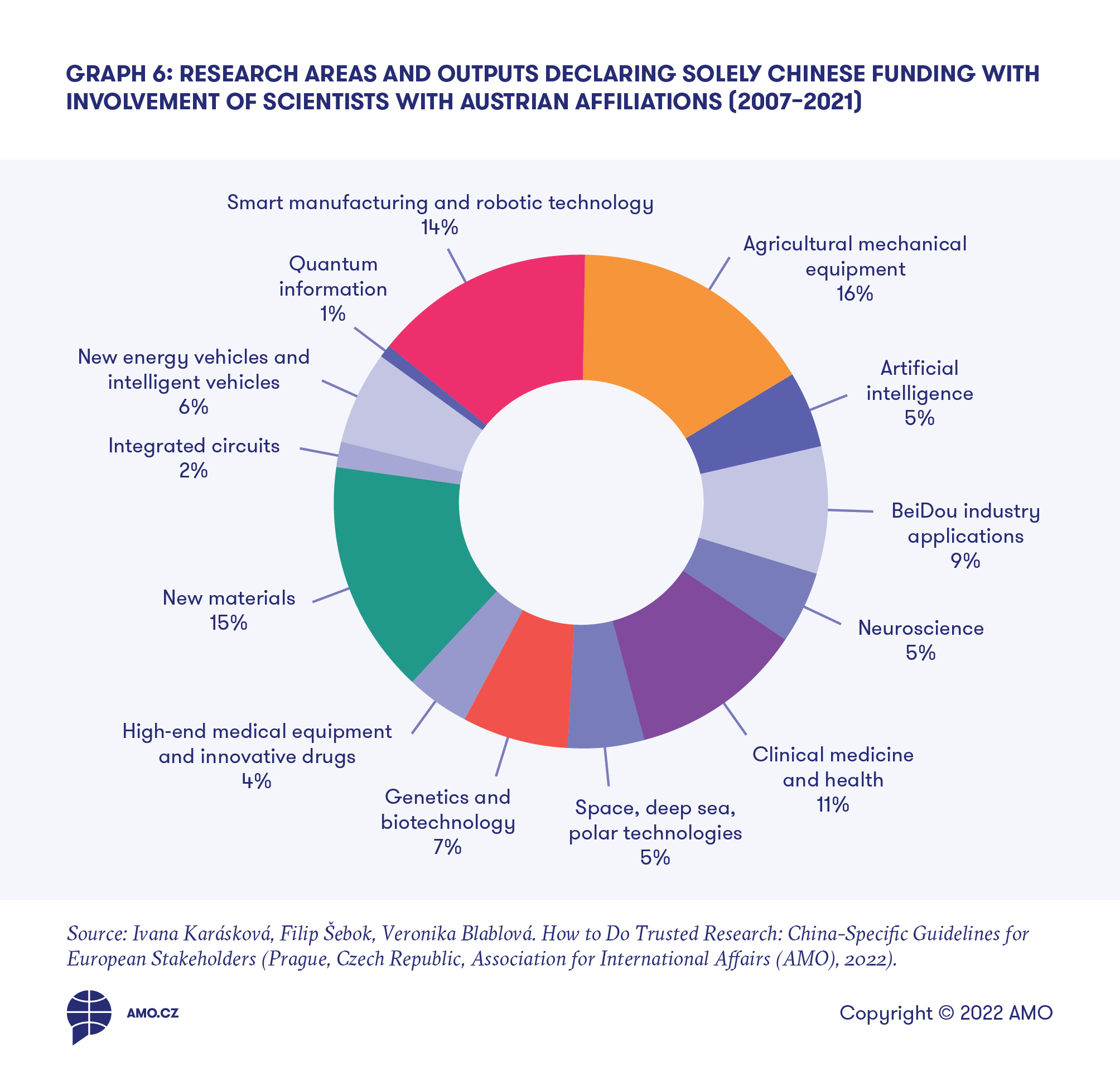
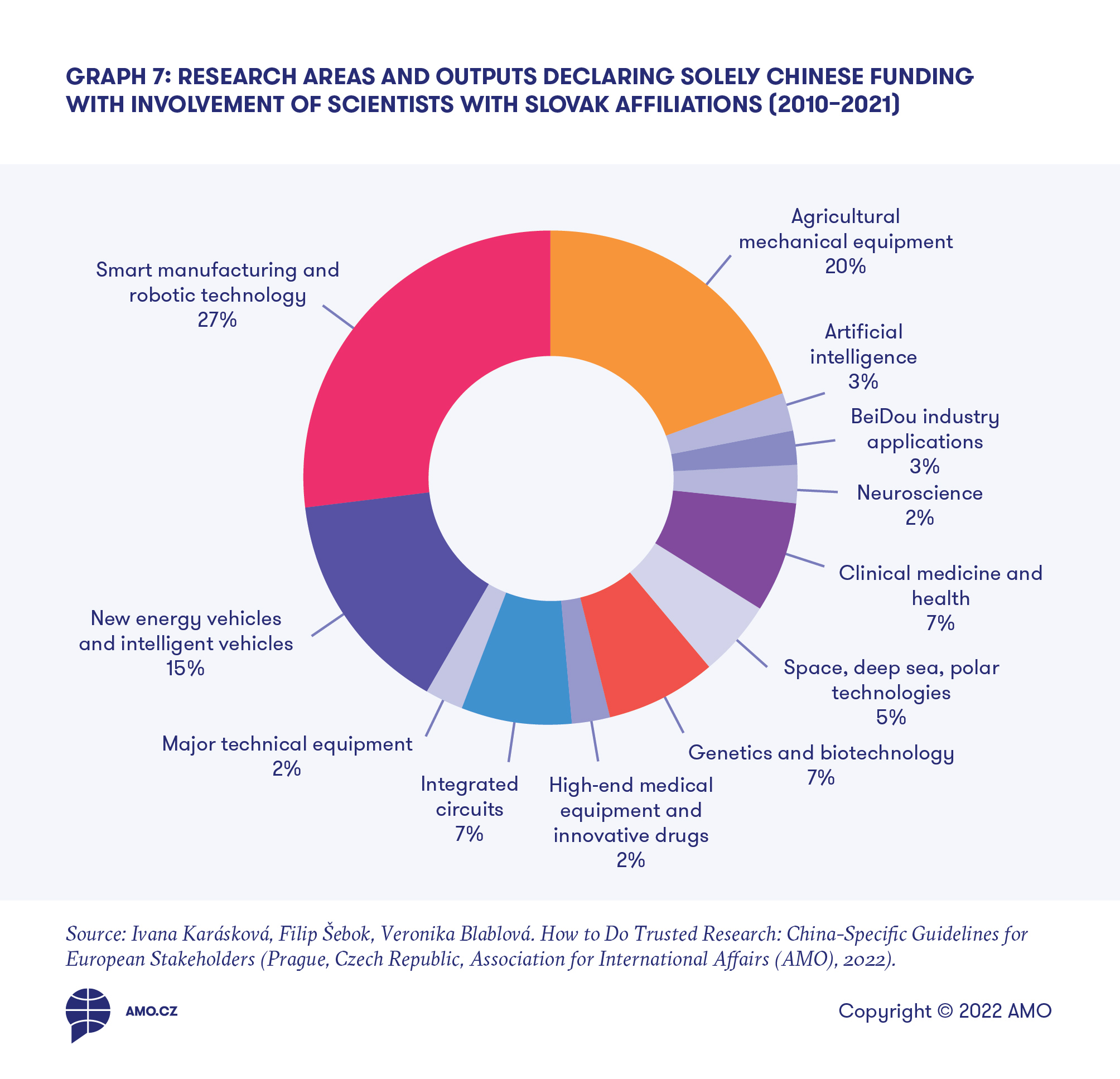
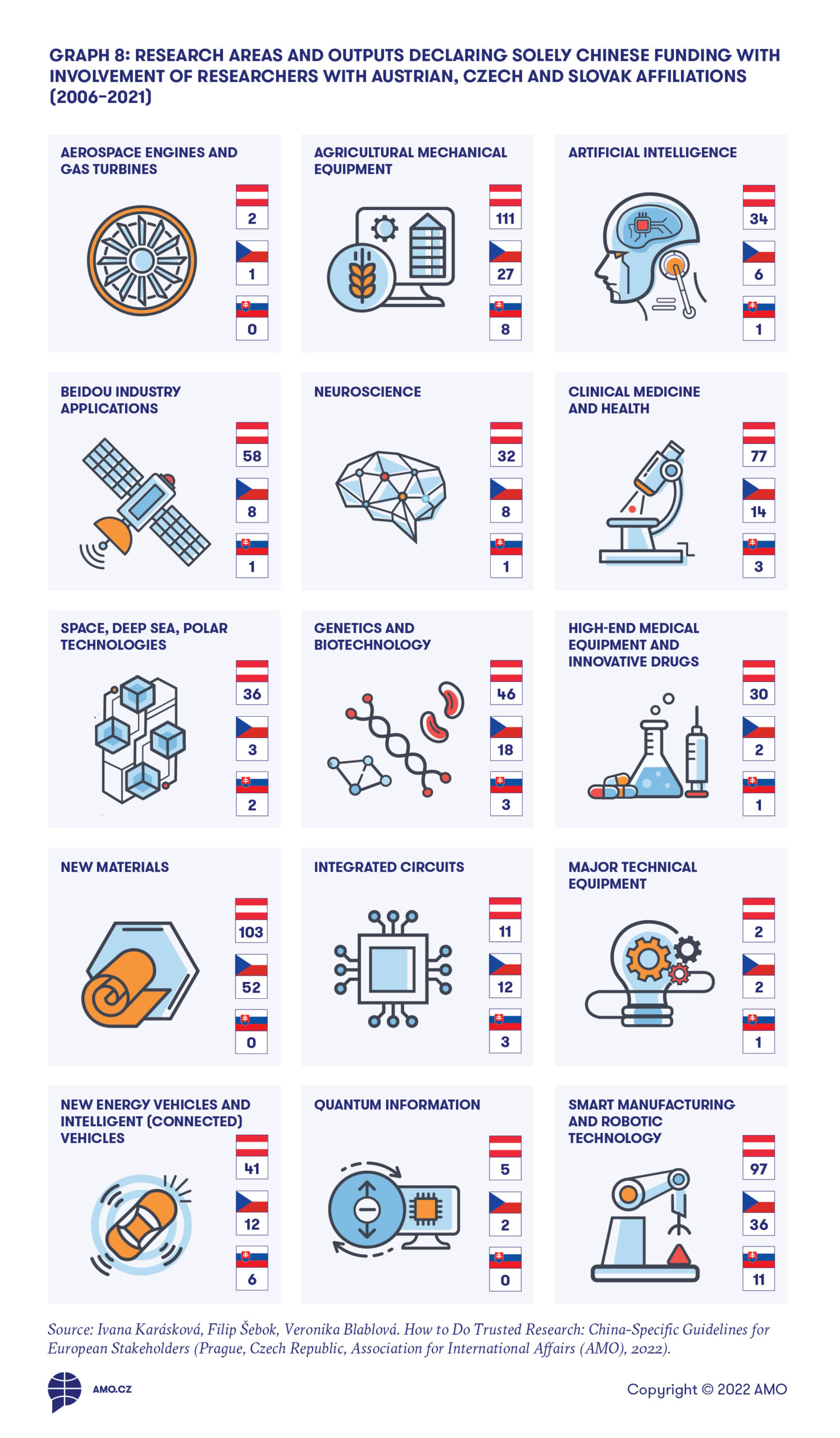
In order to learn more about the level of awareness and motivation of local scientists to engage with China, the research also included an anonymous survey. Authors approached Czech, Slovak and Austrian scientists, who were identified in the previous phase of the research (based on the data from Web of Science) with an online questionnaire.
Almost half of the collected responses indicated the Chinese partner as the initiating party of the research cooperation. On the other hand, only 13 percent of the researchers indicated their university or research centre as incentivising the joint research.
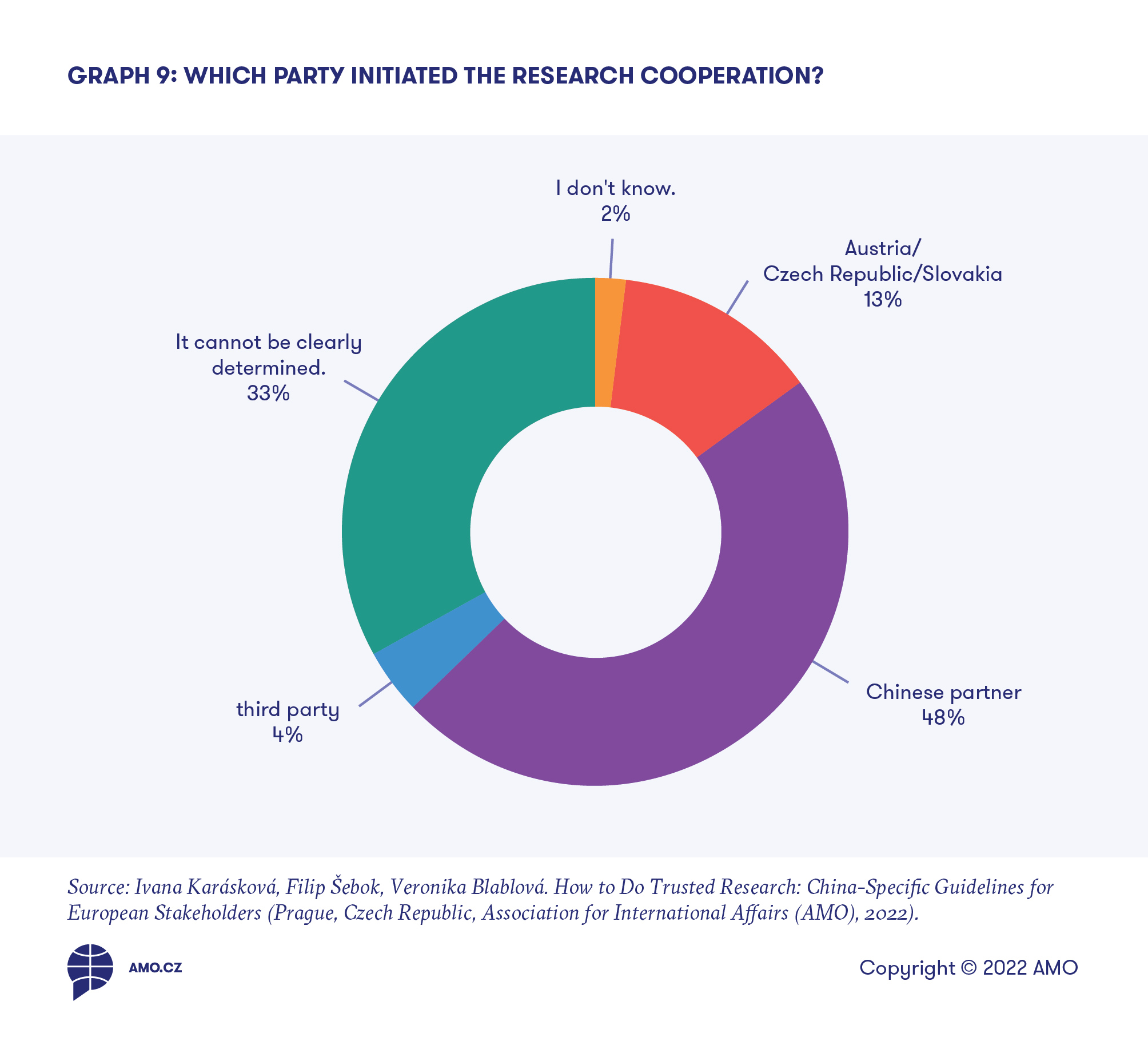
Regarding the motivation driving collaboration with Chinese counterparts, the respondents predominantly underlined the importance of previous positive experience with the Chinese partner and previous personal contacts or experience gained in China. Similarly, positive experience with Chinese students and perceptions of the counterpart as a prestigious partner ranked high among the incentives for research cooperation with China.
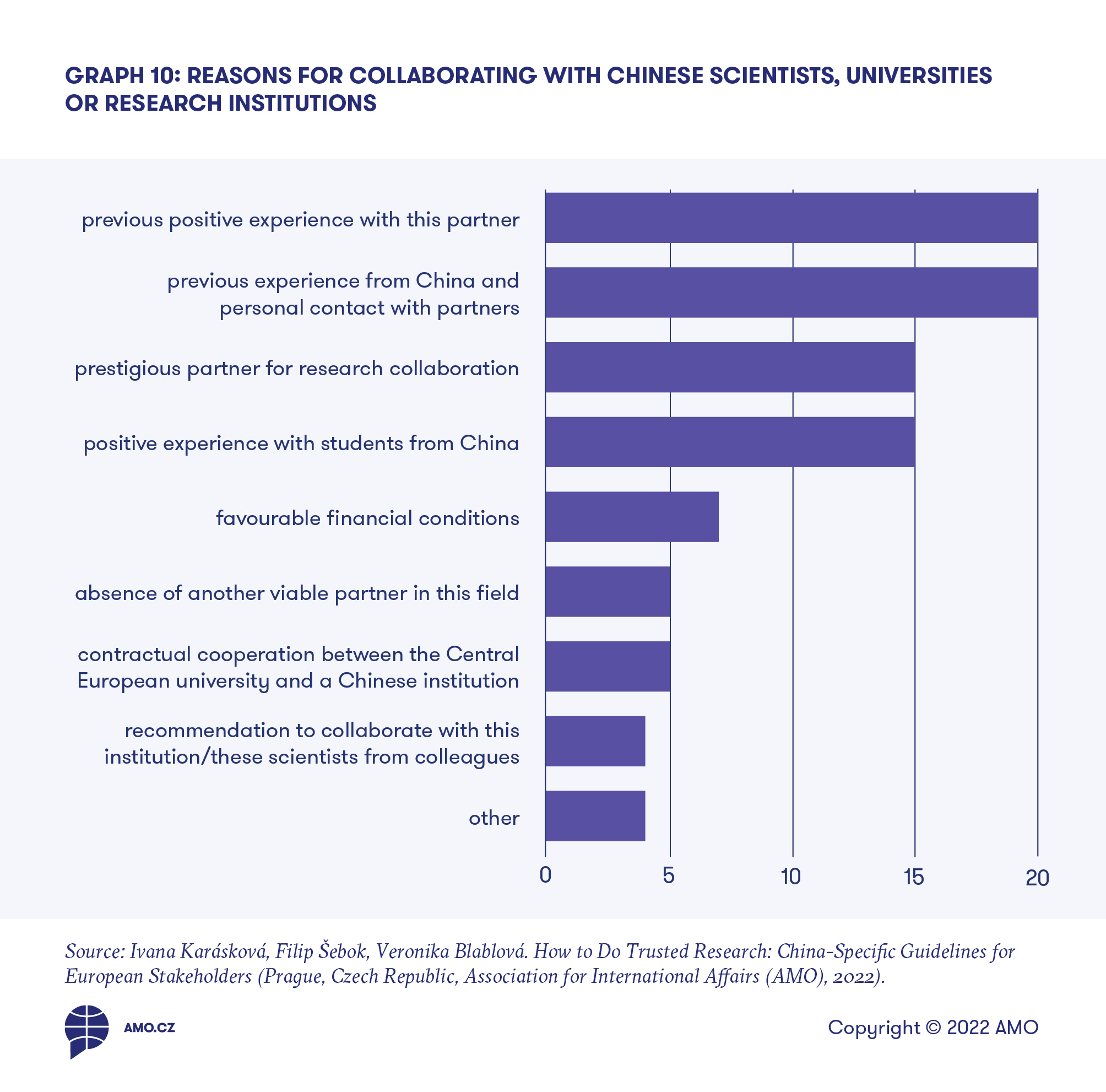
Research cooperation with Chinese scientists, universities or research institutions was not perceived as representing a potential risk by 65 percent of the respondents who filled in the questionnaire.
